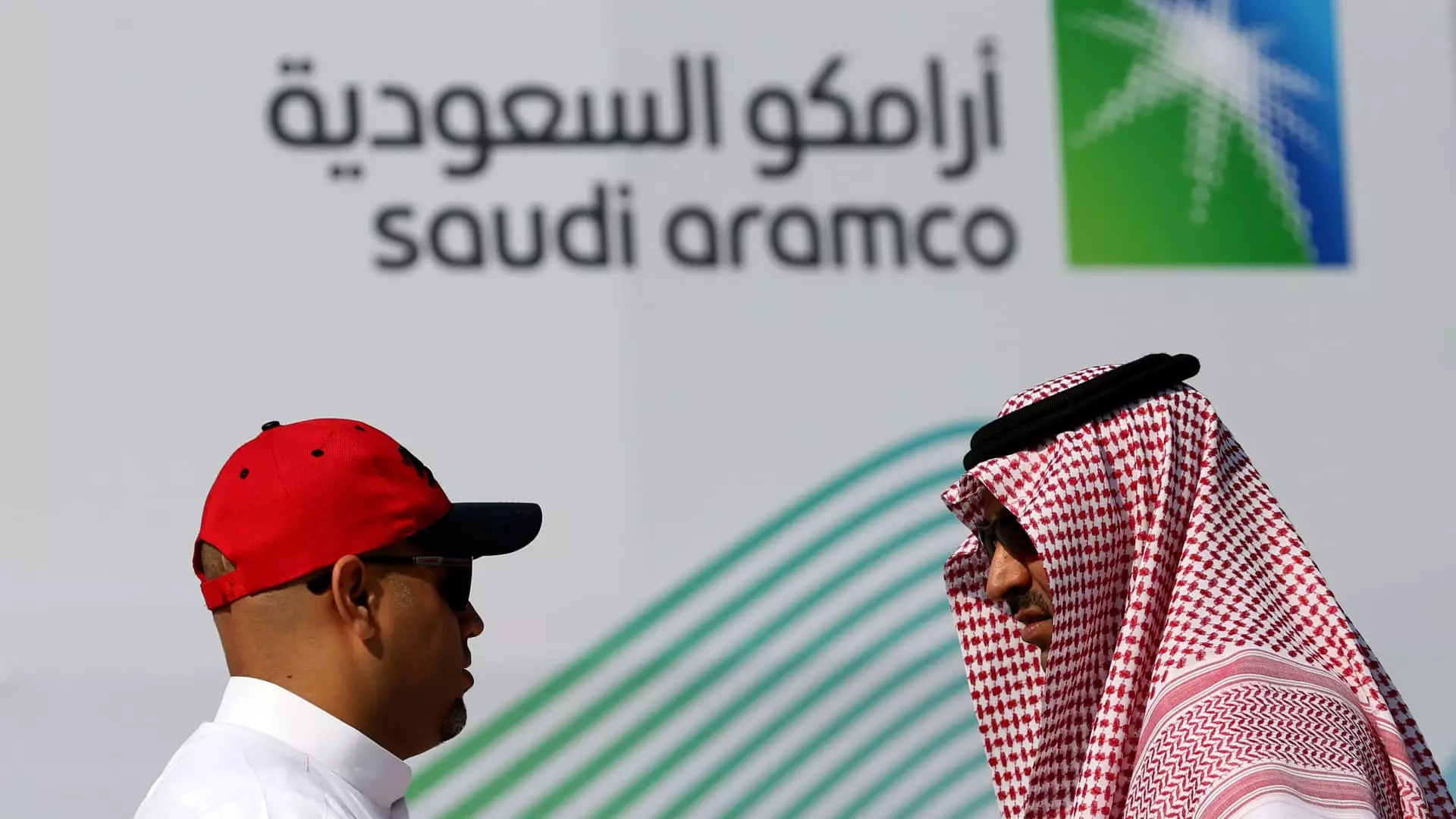As the world’s leading oil producer, Saudi Aramco has long been considered a beacon of financial stability amidst the shifting sands of global economic pressures. However, the latest financial disclosures reveal a stark reality: the company’s first-quarter net profit has plummeted by 5% year-on-year, revealing chinks in its armor. From $27.3 billion last year, the earnings dipped to $26 billion for the first three months of 2025. While some may argue that this figure slightly exceeds analyst expectations, it hardly masks the uneasy undercurrents troubling the industry.
This contraction in profit isn’t merely a statistic reserved for financial analysts to comb through; it reflects a broader malaise affecting not just Aramco but the entire global oil market. Lower production levels, compounded by dwindling oil prices, indicate a worrying trajectory that risks destabilizing not only Saudi Arabia’s economy but also that of its neighboring oil-dependent states. The structural reliance on oil revenue, exacerbated by the Kingdom’s naïve optimism towards future price rebounds, makes the outlook increasingly grim.
Challenging Cash Flow Considerations
Free cash flow, another critical measure of a company’s financial health, also took a hit, plunging from $22.8 billion last year to $19.2 billion this quarter. Such a decline poses pertinent questions about Aramco’s long-term viability and its expansive plans for diversification, including its ambitious Vision 2030 strategy. Can a company tethered to an increasingly finite resource sustain its gargantuan investments in non-oil sectors when its operational cash flow is waning?
According to the data, cash flow from operating activities fell from $33.6 billion to $31.7 billion year-on-year. This downward spiral is perhaps indicative of a more extensive global trend—demand for energy is not what it once was, and the age of fossil fuels appears to be stumbling toward an uncertain future. Investors keen on the long game must ask themselves: Is Aramco merely a ship sailing toward a sunset, or a juggernaut that is too bloated to navigate the stormy seas ahead?
The Dividend Dilemma
The implications of reduced cash flow extend beyond technical figures; they reverberate into the realm of dividends, crucial for investor retention and government financing. Recently, Aramco announced an alarming reduction in its performance-linked dividend payout. This fell drastically from $10.2 billion to a mere $200 million. While the company’s base dividend increased marginally by 4.2% year-on-year to $21.1 billion, the total dividends illustrate a bleak reality: a fall from $31 billion last year to $21.36 billion this quarter. For a state that has staked so much on the oil industry’s fortunes, such cuts will inevitably entail severe economic ramifications.
The Saudi government’s economy, heavily reliant on revenue from public enterprises like Aramco, faces rising deficits and escalating debt levels. With megaprojects compounding financial pressure, it should be evident that the Kingdom’s hopes for a late recovery in oil price are becoming ever more tenuous.
Global Trade Turmoil and Its Aftermath
As stated by Aramco’s CEO Amin Nasser, global trade dynamics and economic uncertainty continue to plague energy markets. This sentiment rings particularly true amidst fresh turbulence caused by geopolitical tensions and U.S.-imposed tariffs that threaten to exacerbate an already fragile oil market. While Nasser expresses optimism about Aramco’s resilience, one cannot escape the heavy cloud of pessimism that hovers over prospects for oil recovery.
With announcements from OPEC+ about boosting production, despite crashing market prices, Saudi Arabia faces a deluge of supply that exacerbates the supply-demand discrepancy. Not only does this signal a miscalculation in strategy, but it also accentuates the strife in capturing stability within the oil markets. Questions surrounding the Kingdom’s long-term strategy necessitate scrutiny: is it a wise pivot toward increased production in an economy already teetering on a precipice?
Forecasting the Future: A Grim Outlook
Universal economic entities like the U.S. Energy Information Administration and Morgan Stanley have revised their oil price forecasts downwards for the year, suggesting alarming projections for the global oil market. With predictions hovering at $60 to $65 per barrel, Saudi Arabia is left in the precarious position of needing oil prices above $90 per barrel to balance its budget, according to the International Monetary Fund. The dire implications of this reality don’t just affect multifaceted investment avenues; they severely limit the country’s ability to pivot and adapt to an evolving economic landscape.
As harsh analyses trickle in from financial institutions and economists, it becomes clear that Saudi Arabia is entering an unprecedented era of financial constraints. More borrowing, asset sell-offs, and expenditure reductions are all indicators of a nation clinging to a past that may no longer be sustainable. In this precarious balancing act between tradition and modernity, the fate of Saudi Aramco mirrors that of its nation—a giant grappling with the limitations of fossil fuel dependency in a rapidly changing world.

Leave a Reply